[javascript protected email address]
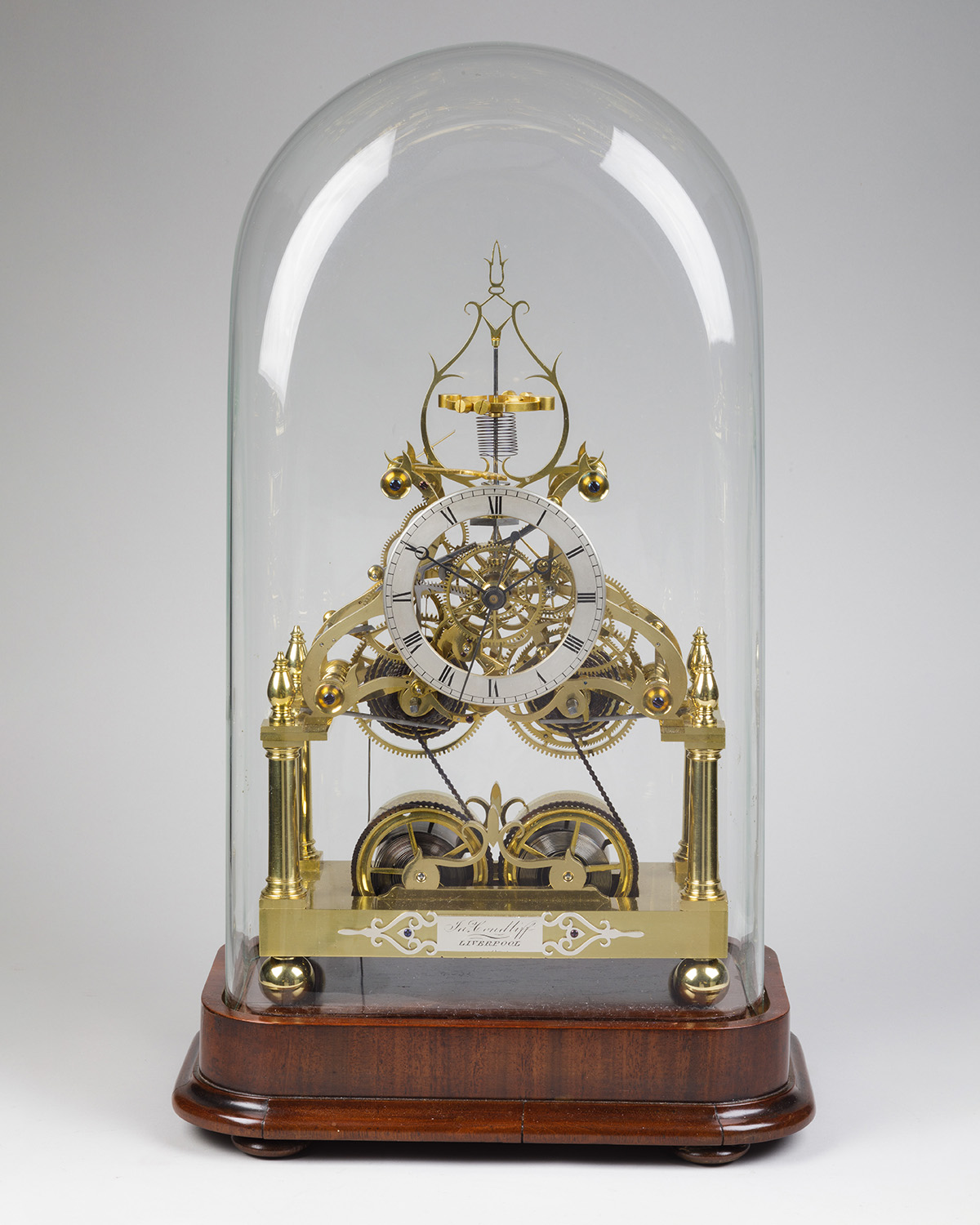
James Condliff, Liverpool

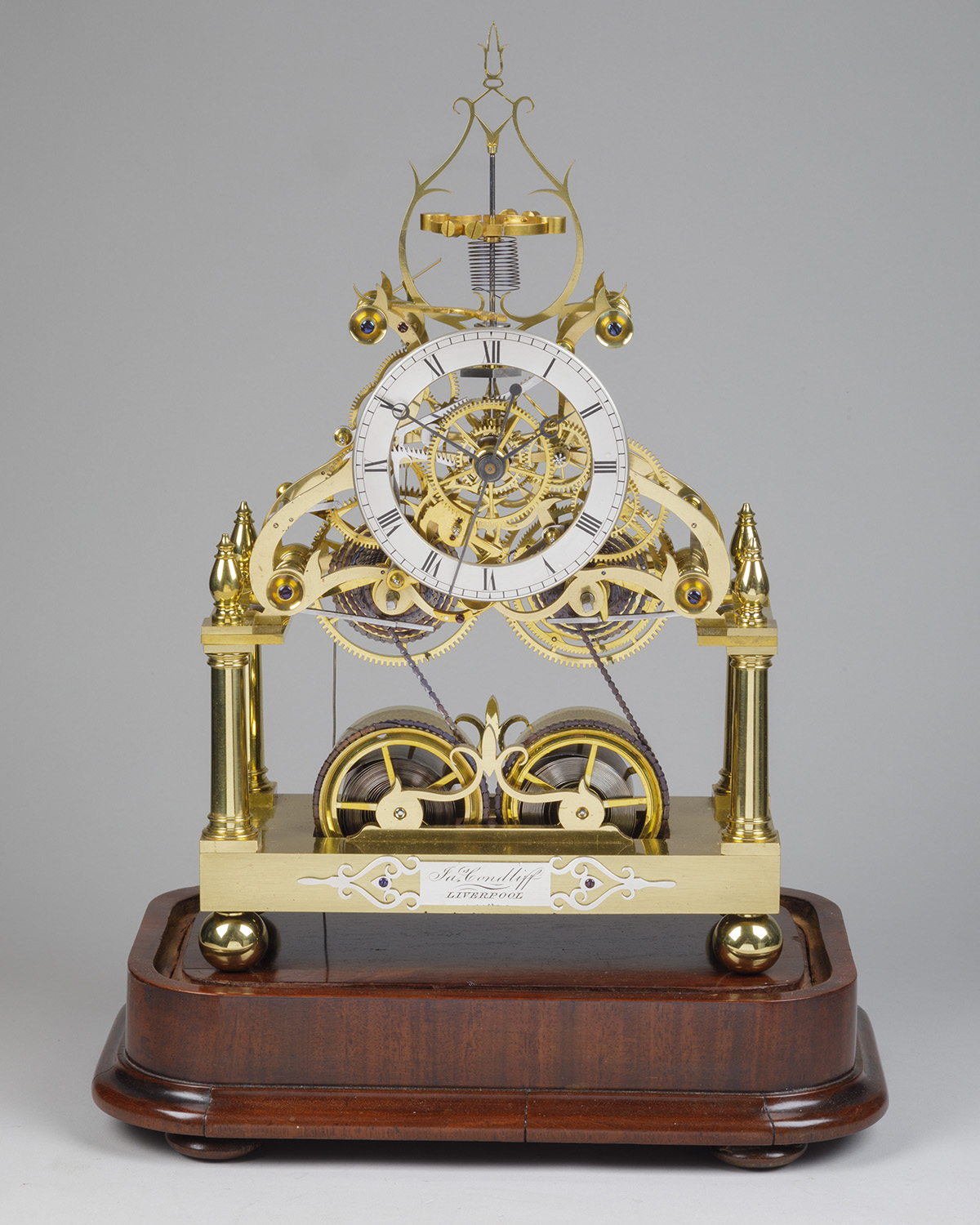
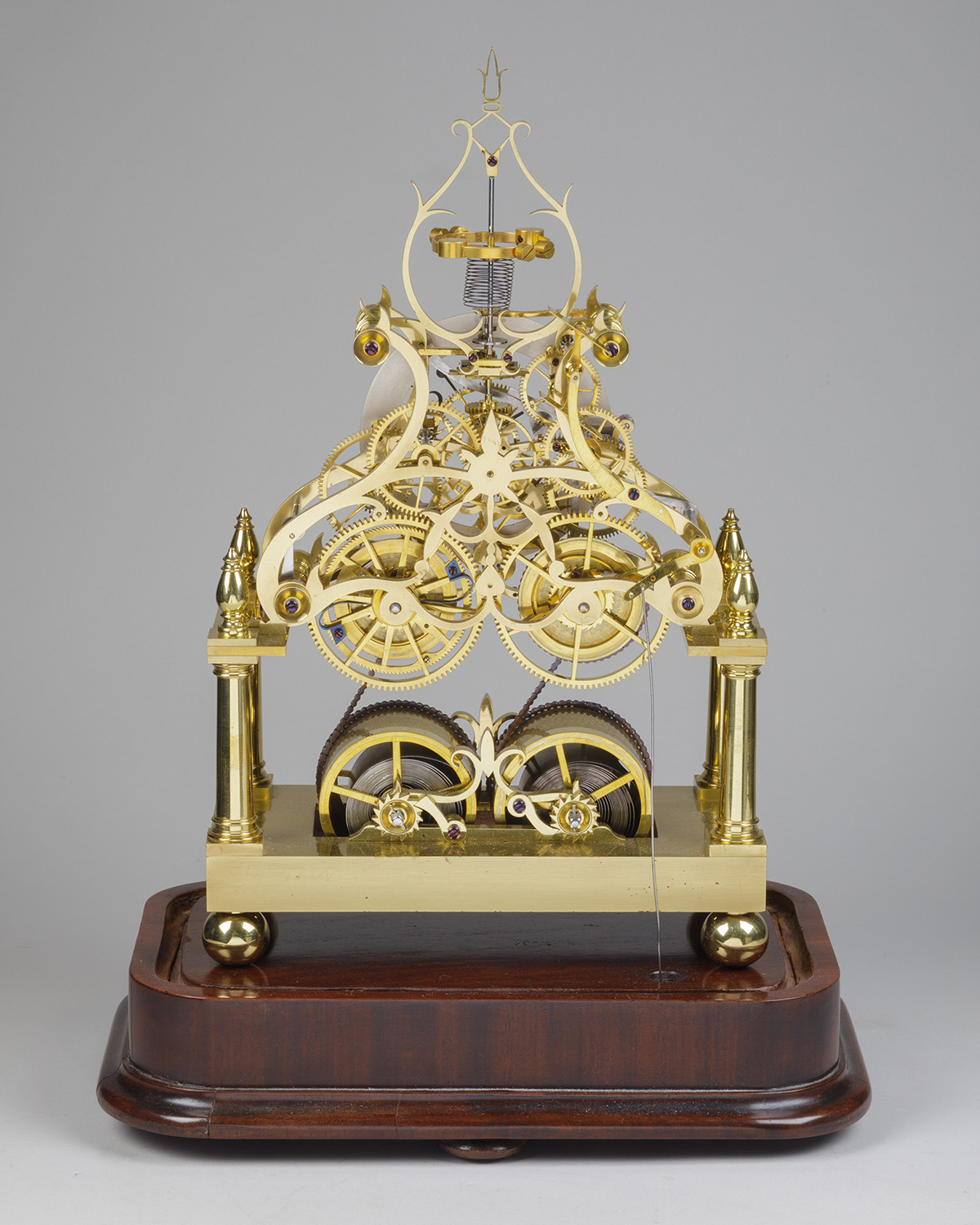
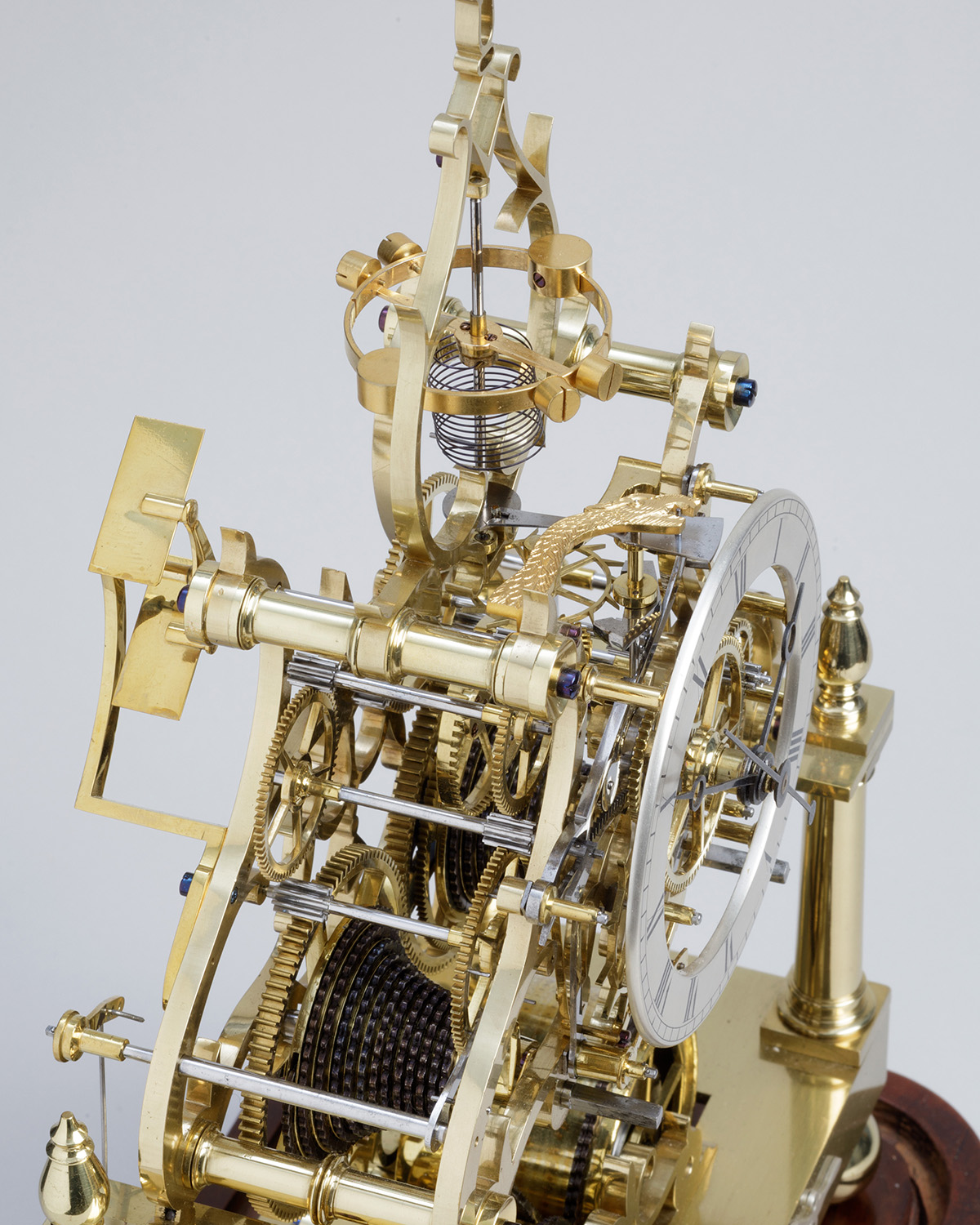
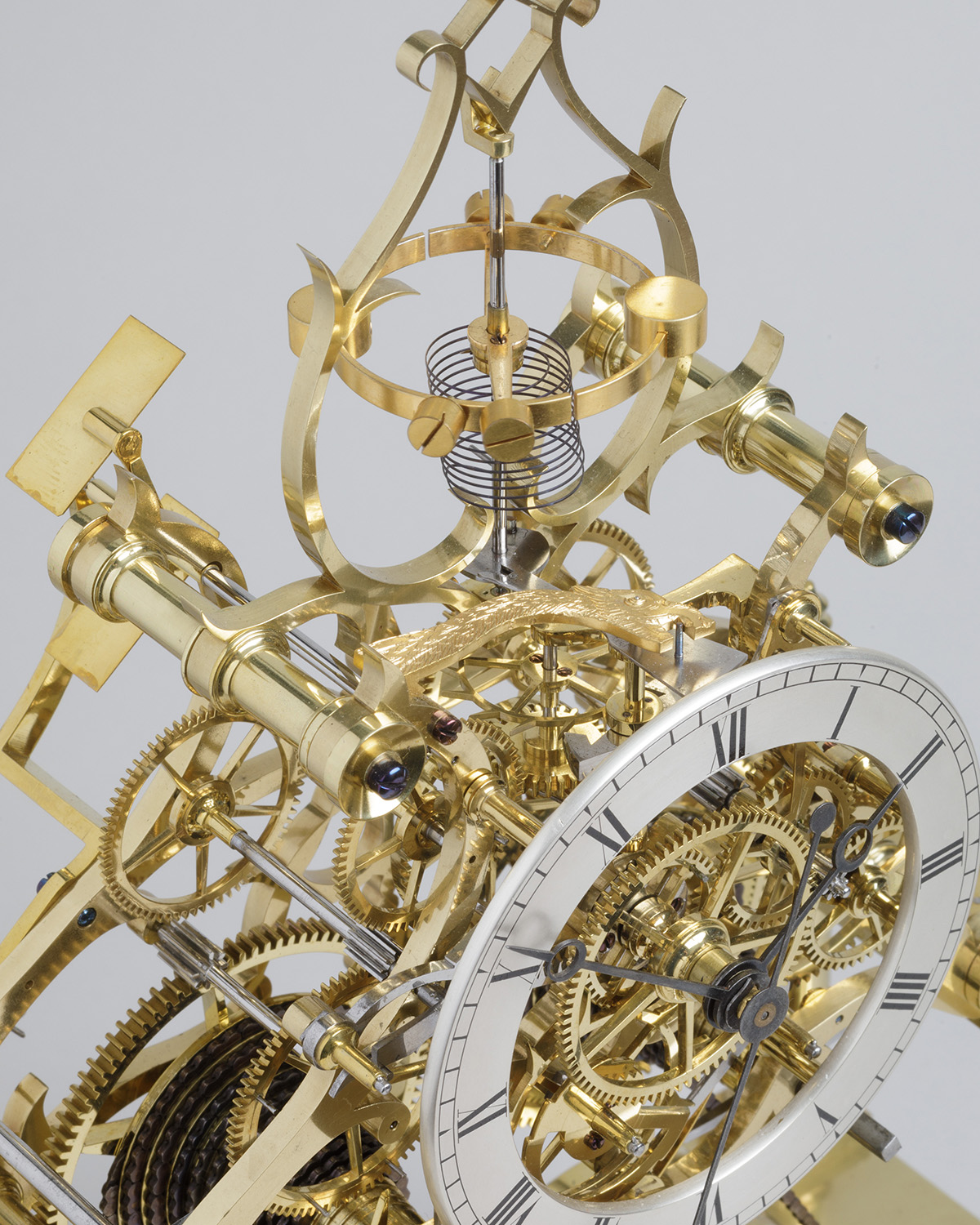
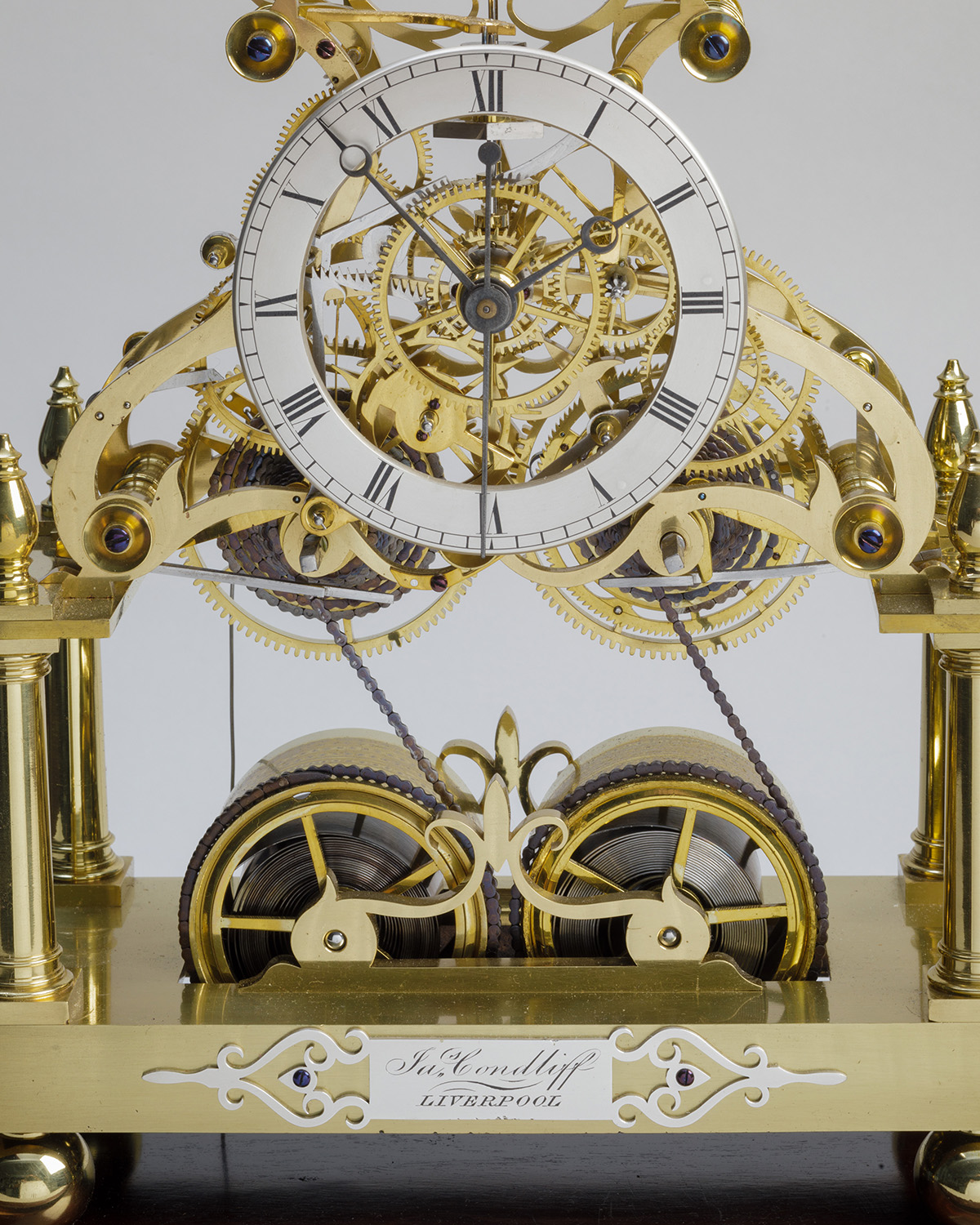
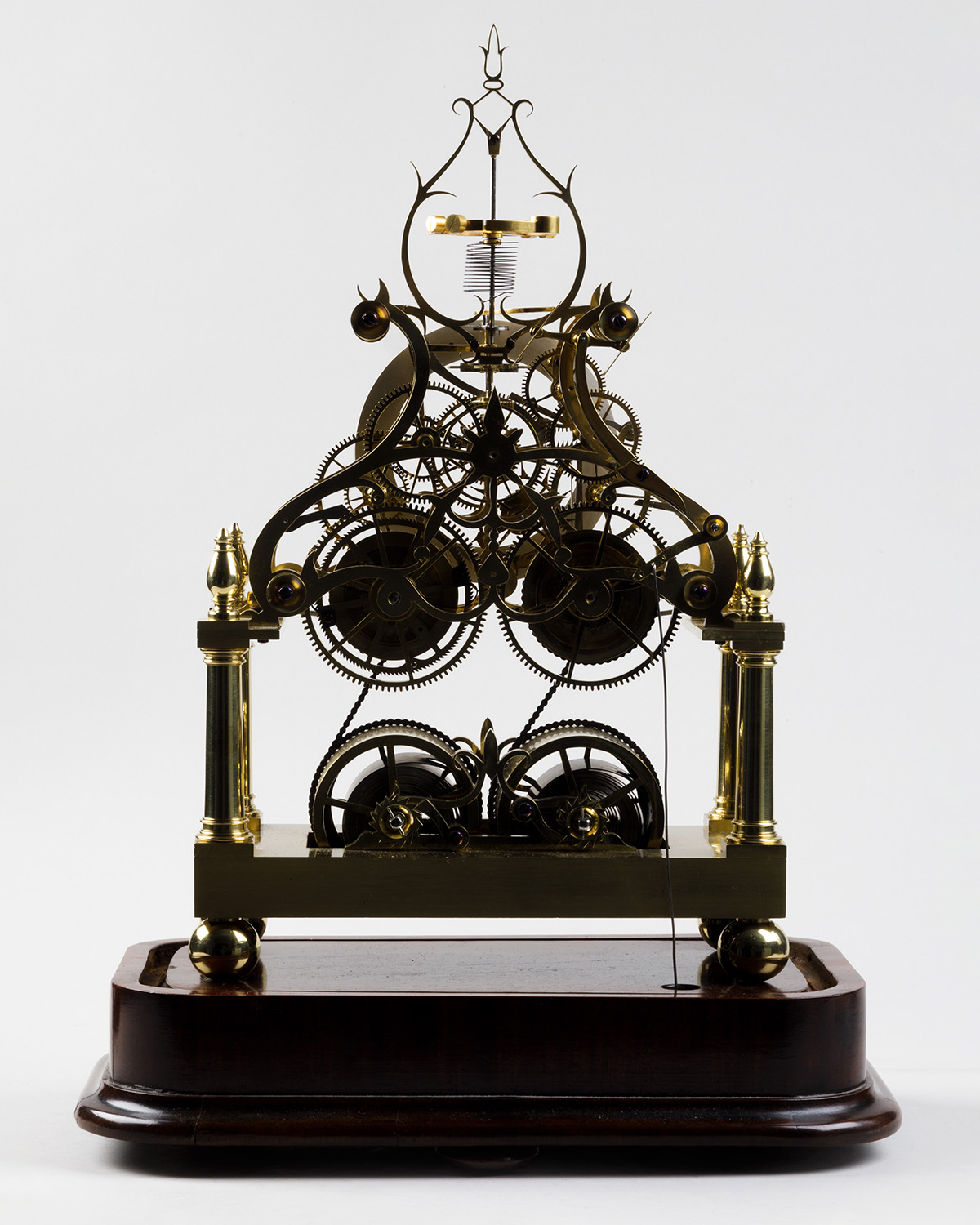
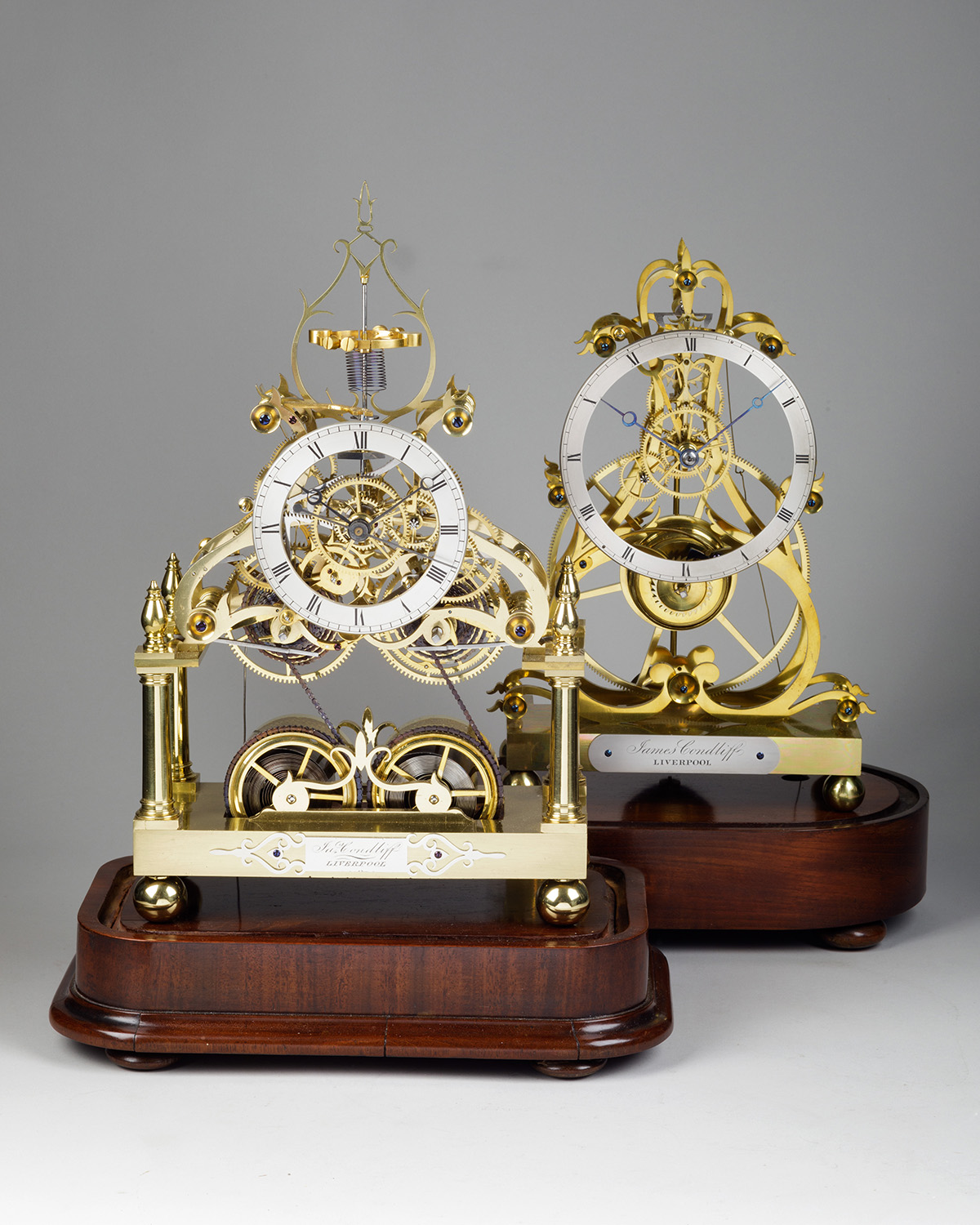
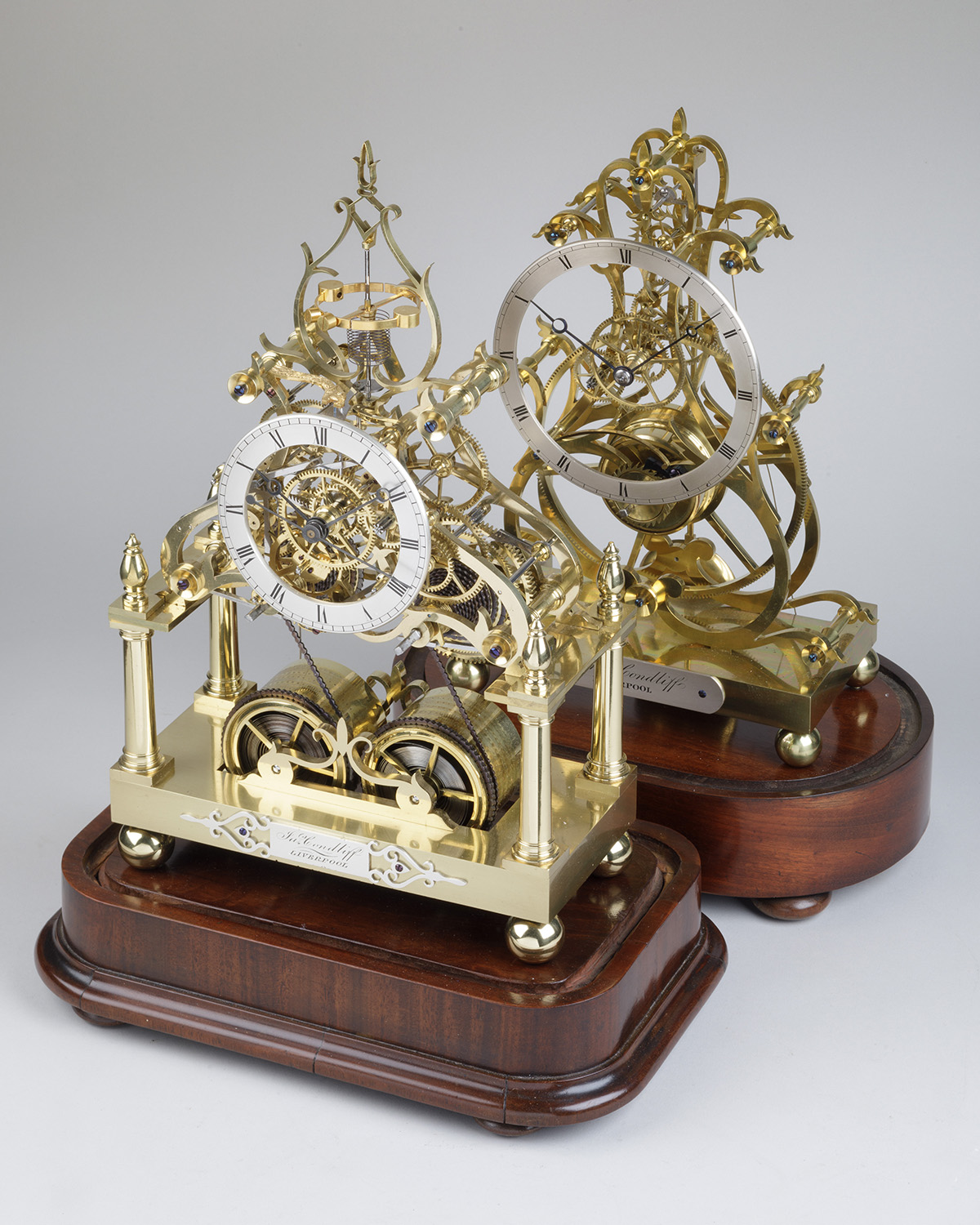
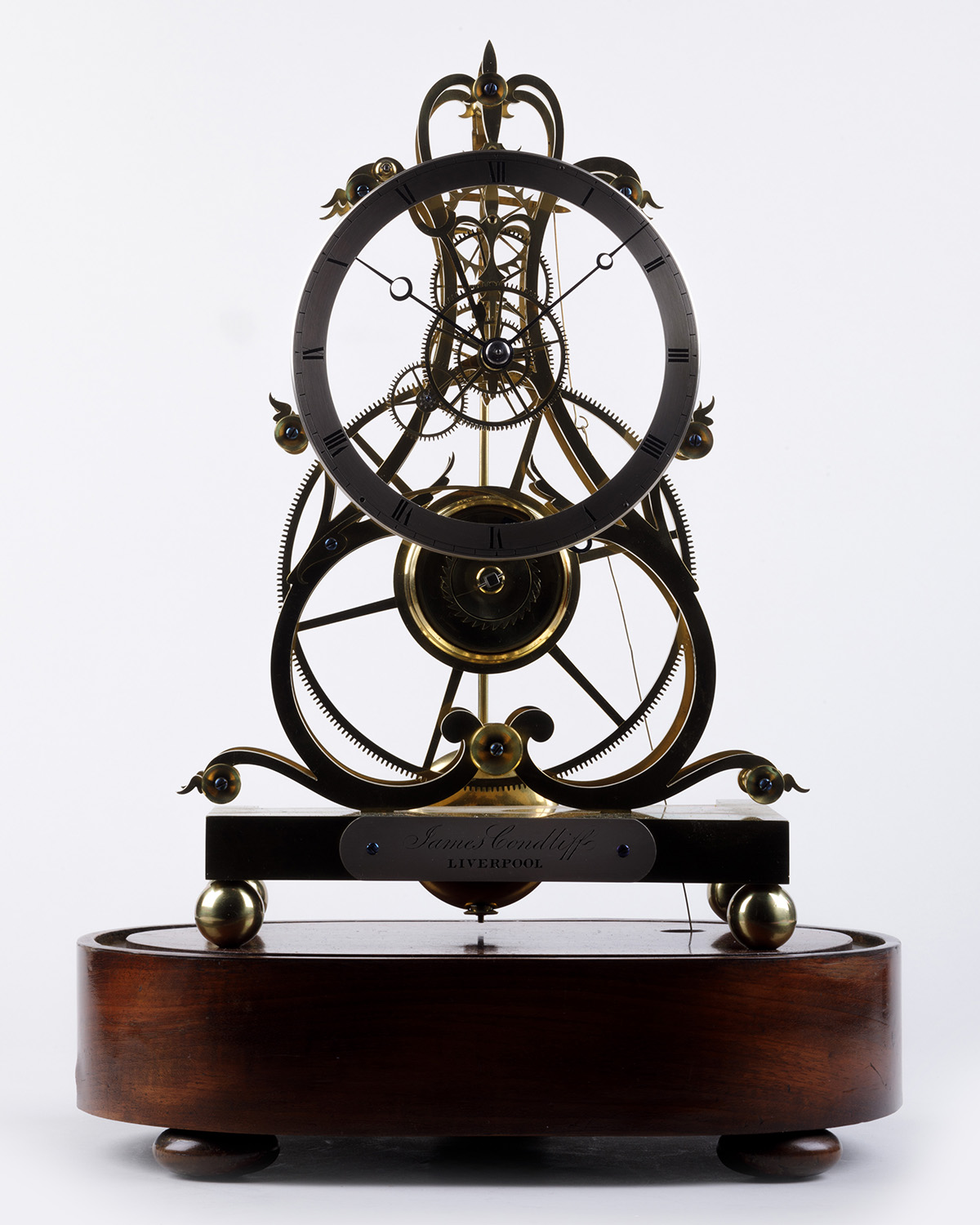
Circa 1850
£55,000
15 inches high without glass dome 18-¼ inches high including the glass dome
A very rare and early brass and mahogany striking skeleton clock with balance wheel escapement and transitional frame. The skeletonised scrolling movement frame has four cylindrical pillars with blued steel screws front and back, at the apex an large gilt-brass chronometer-quality balance wheel oscillates within an elegant tear drop frame with a blued steel helical balance spring and English lever escapement with sapphire pallets and ornate engraved dragon''s head capturing the banking pin, the going and strike trains both having delicate wheels with five crossings, the great wheels each having six. The fusees are held within the upper movement frame with their chains extending below to the two skeletonised spring barrels which are held in a rectangular base section which has four gently tapering doric columns to each corner surmounted by acorn finials, the front is applied with a silvered brass signature plaque engraved Jas. Condliff Liverpool, the brass case is raised on ball feet which are supported on a well-figured mahogany base housing the hour striking gong; the whole clock is covered by a glass dome which slots into the mahogany base. Provenance Bonhams, London, 12th December 2012, lot 98 – sold unrestored for £45,000 JAMES CONDLIFF One of the many pleasures of owning a Condliff skeleton clock is the pleasing knowledge that you own the very best that English skeleton clockmaking offered in the 19th century. James Condliff was rightly regarded as the father of English skeleton clock making; he was the first English clockmaker to specialise in its art form and no other clockmaker surpassed the quality and beauty of his creations. Each of Condliff''s clocks were individually hand crafted, none are exactly alike, and they were produced in tiny numbers. Fate was on Condliff''s side because with the onset of the industrial revolution the skeleton clock became very popular clock and very soon the London clockmakers, particularly in the Clerkenwell district, began to make a wide variety of interesting skeleton clocks; however, none were able to emulate the elegance and sophistication of those made by the Condliff family. The Condliff family comprised James Condliff circa 1815 James's brother Joseph Condliff circa 1825-1845 Joseph's son John Berry Condliff circa 1846-1865 John Berry's son Thomas The Three Series This clock is one of only two known by Condliff made in this distinctive ‘transitional'' style which maps the transformation from Condliff''s first to the second series clocks. First Series The first series has an arched movement frame raised on four columns with other a single dial or three dials in ‘regulator'' format. Transitional Typified by the present clock, of which there are two known, the present clock and the Scoresby Condliff; both with the four columns supporting the movement but the movement has started to develop from an arched frame into a scroll frame. Second Series The second series does away with the four columns supporting the movement and develops into a complete scrolling frame which spreads the wheel trains out giving more limelight to the wheelwork and lending the clock a more elegant, finished appearance. Third Series The third series is typified by the simple, but arguably most elegant single train timepiece clocks, often with passing strike.
